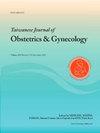接触挥发性有机化合物与女性不孕症之间的关系:一项NHANES分析
IF 2
4区 医学
Q2 OBSTETRICS & GYNECOLOGY
引用次数: 0
摘要
不孕症影响着全球很大一部分人口,环境、生活方式和生物因素对其发病率有影响。挥发性有机化合物(VOCs)广泛用于消费品,被认为是环境污染物,并与各种不利的健康后果有关。然而,它们对女性生育能力的影响尚不清楚。本研究探讨了女性尿液VOC代谢物水平与不孕症的关系。材料和方法本横断面分析利用了2013-2018年国家健康与营养检查调查(NHANES)的数据。18-45岁具有生殖健康数据的女性参与者被纳入研究。通过问卷调查确定不孕状况,并从NHANES实验室数据中获得尿液VOC代谢物水平。通过单变量和多变量回归分析评估VOC水平与不孕症之间的关系。结果在NHANES数据集中的29400名女性参与者中,1097名女性符合纳入标准。校正混杂因素的多变量分析显示,12种特定VOC代谢物与不育可能性增加之间存在显著关联,其中n -乙酰基- s -(3,4-二羟基丁基)-l-半胱氨酸(DHBMA)(校正比值比[aOR] = 1.48, 95%可信区间[CI]: 1.04-2.12, p = 0.030)和n -乙酰基- s -(2-羟丙基)-l-半胱氨酸(2HPMA) (aOR = 1.41, 95% CI: 1.07-1.85, p = 0.016)的相关性最大。结论我们的研究强调了特定尿液VOC代谢物与女性不孕症可能性增加之间的显著关联。虽然不能最终确定因果关系,但研究结果初步了解了与VOC接触有关的生殖健康风险。本文章由计算机程序翻译,如有差异,请以英文原文为准。
Association between exposure to volatile organic compounds and female infertility: An NHANES analysis
Objective
Infertility affects a large portion of the global population, with environmental, lifestyle, and biological factors contributing to its incidence. Volatile organic compounds (VOCs) are widely used in consumer products, and are considered environmental pollutants and are associated with various adverse health outcomes. However, their impact on female fertility remains unclear. This study investigated the relation between urinary VOC metabolite levels and infertility in women.
Materials and methods
This cross-sectional analysis utilized data from the National Health and Nutrition Examination Survey (NHANES) for the years 2013–2018. Female participants 18–45 years old with reproductive health data were included. Infertility status was determined through questionnaire responses, and urinary VOC metabolite levels were obtained from the NHANES laboratory data. The associations between VOC levels and infertility were assessed through univariate and multivariable regression analyses.
Results
Of the 29,400 female participants in the NHANES data set, 1097 women met the inclusion criteria. Multivariable analysis adjusted for confounders showed significant associations between 12 specific VOC metabolites and an increased likelihood of infertility, with N-Acetyl-S-(3,4-dihydroxybutyl)-l-cysteine (DHBMA) (adjusted odds ratio [aOR] = 1.48, 95 % confidence interval [CI]: 1.04–2.12, p = 0.030) and N-Acetyl-S-(2-hydroxypropyl)-l-cysteine (2HPMA) (aOR = 1.41, 95 % CI:1.07–1.85, p = 0.016) showing the strongest associations.
Conclusions
Our study highlights a significant association between specific urinary VOC metabolites and an increased likelihood of infertility in women. While causality cannot be conclusively determined, the findings offer an initial insight into the reproductive health risks linked to VOC exposure.
求助全文
通过发布文献求助,成功后即可免费获取论文全文。
去求助
来源期刊

Taiwanese Journal of Obstetrics & Gynecology
OBSTETRICS & GYNECOLOGY-
CiteScore
3.60
自引率
23.80%
发文量
207
审稿时长
4-8 weeks
期刊介绍:
Taiwanese Journal of Obstetrics and Gynecology is a peer-reviewed journal and open access publishing editorials, reviews, original articles, short communications, case reports, research letters, correspondence and letters to the editor in the field of obstetrics and gynecology.
The aims of the journal are to:
1.Publish cutting-edge, innovative and topical research that addresses screening, diagnosis, management and care in women''s health
2.Deliver evidence-based information
3.Promote the sharing of clinical experience
4.Address women-related health promotion
The journal provides comprehensive coverage of topics in obstetrics & gynecology and women''s health including maternal-fetal medicine, reproductive endocrinology/infertility, and gynecologic oncology. Taiwan Association of Obstetrics and Gynecology.
 求助内容:
求助内容: 应助结果提醒方式:
应助结果提醒方式:


